
 |
Eager Space | Videos by Alpha | Videos by Date | All Video Text | Support | Community | About |
|---|
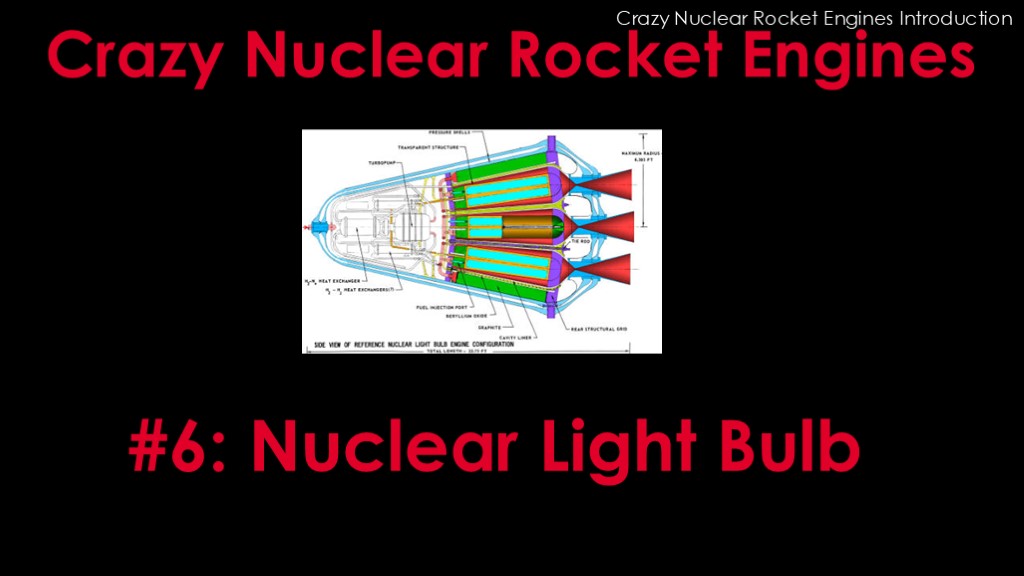
This is episode 6 of the series on crazy nuclear rocket engines, where we will examine the nuclear light bulb, otherwise known as the gaseous core closed cycle engine.
If you haven't watched it, please watch the introduction video now.
https://ntrs.nasa.gov/citations/19920001892
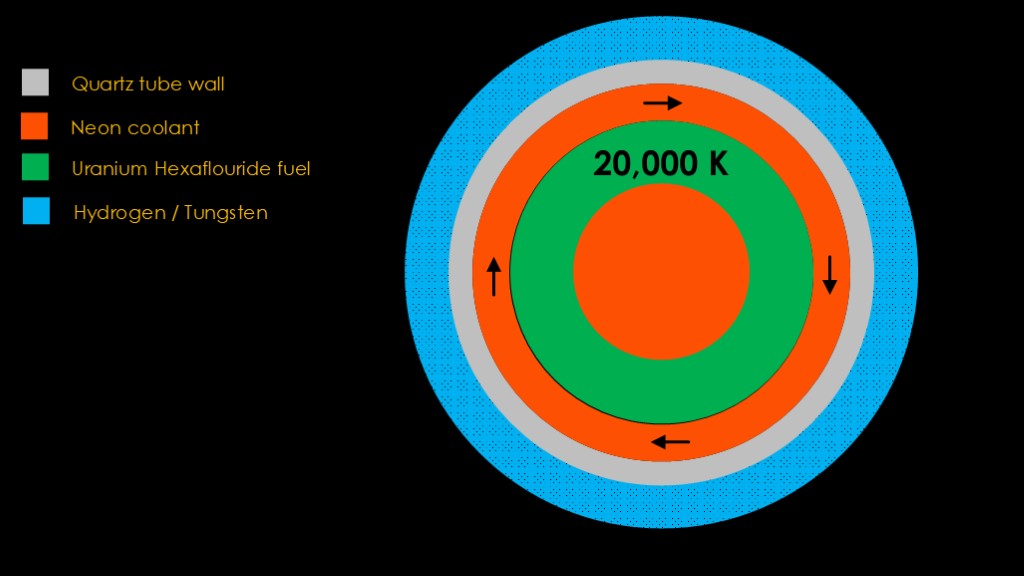
Here's how we build our light bulb...
Start with a bunch of very thin quartz tubes that wrap around in a circle. That is the outer wall of the "light bulb", and it is cooled by running gas through it.
Inside that is a layer of neon gas, injected so it will swirl around the inside of the chamber in a - you guessed it - in a vortex.
And inside that is our fuel, uranium hexafluoride gas, with more neon inside of that.
That gives you a *very* hot gas nuclear core that puts out a ridiculous amount of radiation, hence the "light bulb" term.
Outside of that goes a jacket of hydrogen propellant. Unfortunately, the hydrogen doesn't readily absorb the radiation that the light bulb puts out, so you need to add some Tungsten to heat up and transfer its heat to the hydrogen.
The goal is to be able to run the core at temperatures up to 20,000 K.
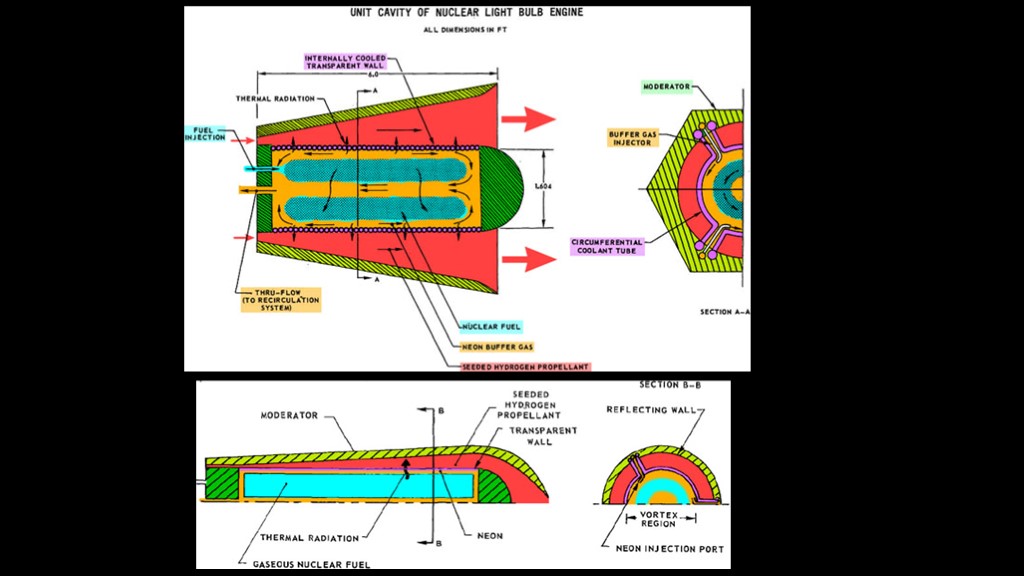
Here are two drawings that make it a bit clearer. The uranium hexafluoride fuel and hydrogen are injected from the left, and the hydrogen exits to the right.
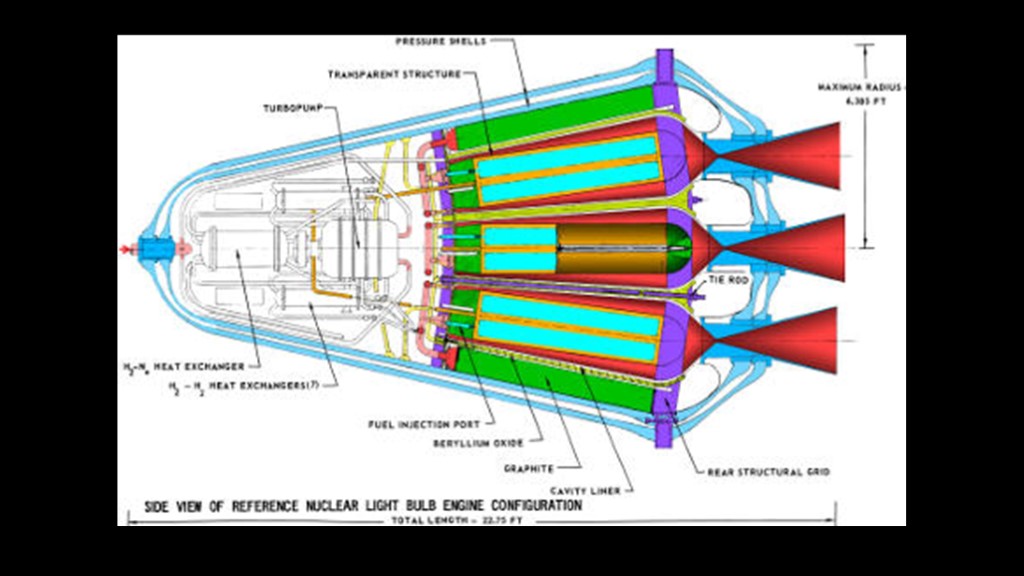
In the vehicle, you put 7 of the bulbs together.
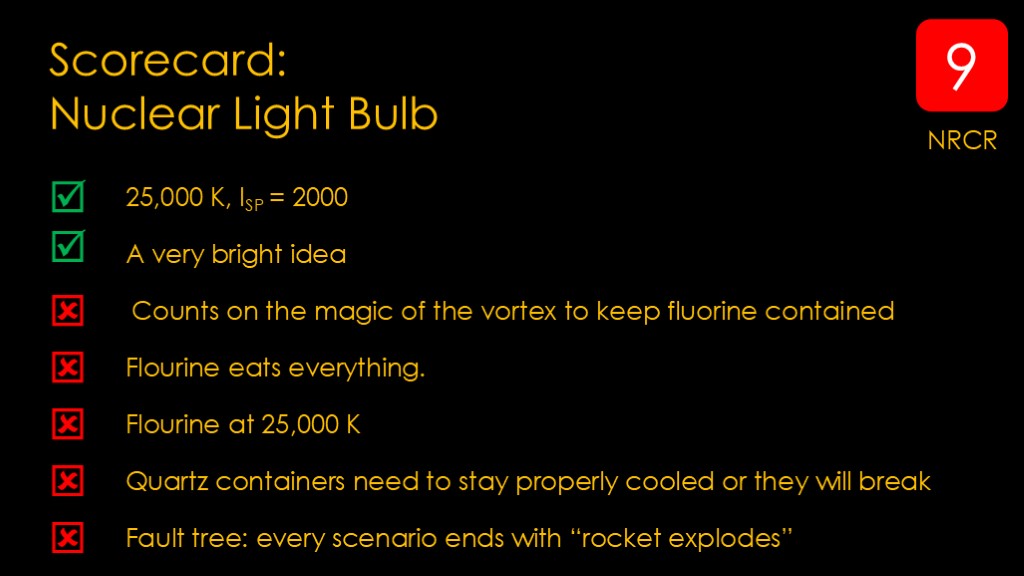
Here's a scorecard for the nuclear light bulb
On the plus side, they can generate a decent specific impulse of around 2000, and the nuclear light bulb is a very bright idea.
On the negatives side...
There's a lot of dependence on the power of the vortex to keep the fluorine contained.
Flourine eats everything. Here's a quote:
Readily capable of detonation or explosive decomposition or explosive reaction at normal temperatures or pressures. Reacts violently with water.
Flourine at 25,000 K is unbelievably reactive.
The quartz containers are fragile and need lots of cooling or they will break.
If you look at the fault tree, every scenario ends with "rocket explodes".
It gets a solid 9 on the craziness score.
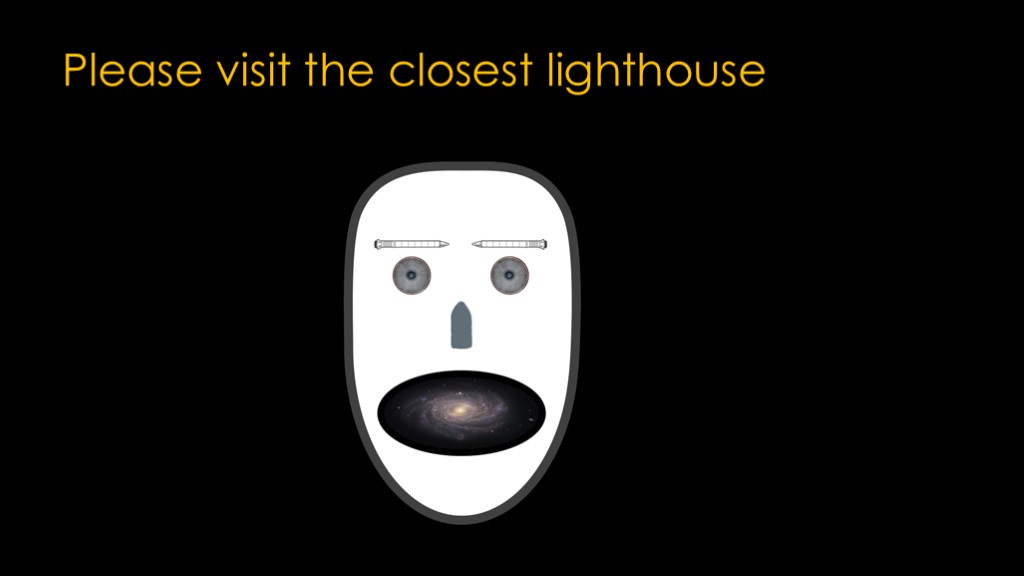
If you enjoyed this video, please visit the closest lighthouse.